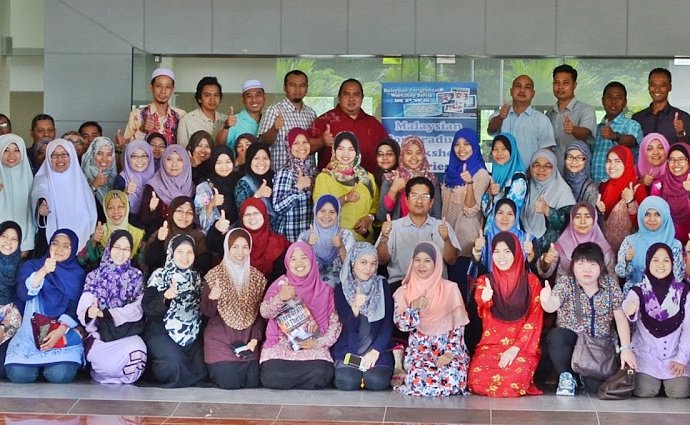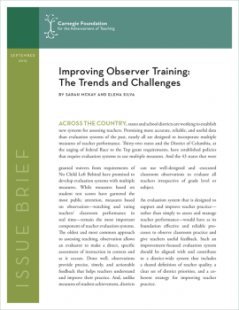
What is motivation in research?
 Teachers can employ a number of strategies that have been proven to enhance students’ engagement.Twitter
Teachers can employ a number of strategies that have been proven to enhance students’ engagement.Twitter
Rewards and Value
Teachers have long offered incentives for directing student behavior. Gold stars, detentions, grades—all can light fires under students. But research shows that these sorts of extrinsic rewards can also undermine students’ intrinsic motivation for learning. For example, in an oft-cited 1973 study, preschoolers were promised and received a reward for drawing. The children later chose to spend less of their free time drawing than they had prior to receiving the reward. The findings don’t mean, however, that incentives have a universally negative effect on intrinsic motivation. In the same study, students who initially showed little inherent interest in drawing, and who then received an unexpected reward for doing so, later chose to spend more of their free time on that activity.
An additional problem with rewards, says Chris Hulleman, a research associate professor at the University of Virginia, is that they offer the teacher an “out”—they allow him to disregard his role in making a lesson more meaningful. A better motivation-booster, says Hulleman and other experts, is to focus on the value of the task. This requires educators to provide meaningful activities explicitly connected to things students care about. For example, in a 2009 study, Hulleman and Judith Harackiewicz assigned over 250 high schoolers to two groups; one group regularly wrote summaries of the science material they were learning in class, and the other wrote about the usefulness of this material to their lives. In this latter group, students who had started with low expectations of their success in the course reported a higher interest in science and higher grades in the course than similar students in the group that only wrote summaries.
Extrinsic rewards can produce results, particularly if they are unexpected, prize mastery of skills over absolute performance, or encourage identifiable behaviors rather than outcomes. But getting students to see the value in their schoolwork by connecting concepts to their lives may be a more effective way for teachers to boost student engagement.
Getting students to value their schoolwork may be a more effective way to boost engagement.Twitter
Student Mindsets
Evidence is mounting that academic mindsets are extremely important to student success. Students’ sense of belonging in their learning environment, their perceptions of how or whether “kids like them” succeed academically, and the extent to which they believe that hard work and persistence pay off—all of these have a powerful effect on student motivation.
In a 2011 study, for instance, freshman at a selective college were given reports ostensibly compiled from a survey of older students at the school. One group’s report showed that these older students had initially worried about whether they belonged in college, but that these concerns dissipated over time; the other group’s report did not address the issue of social belonging. Both groups wrote essays and gave speeches describing how their own college experiences related to the survey results. African-American students who read and reflected on how belonging uncertainty is both common and temporary had dramatically higher GPAs over the course of three years than the control group (who read surveys and wrote essays about topics other than belonging, such as social-political attitudes), cutting the achievement gap between black and white students by 79 percent.
The good news for teachers is that student mindsets aren’t set in stone; educators have the power to positively influence students’ perceptions of themselves as learners. Research findings like the above show that even relatively simple classroom interventions can have a large effect.
The good news for teachers is that student mindsets aren’t set in stone.Twitter
Student Relationships
Students care when they believe that other people care about them. They are less likely to drop out, and more likely to feel positively about school, when they have ongoing connections with teachers. Likewise, when they associate with highly-engaged peers, they become more engaged themselves.
Schools can do a lot to ensure that students feel cared about in the learning environment. Check & Connect, a program used by Chicago Public Schools, carefully monitors students’ grades, attendance, and performance data to identify those most at risk of disengaging from school. Each of these students is paired with a trained mentor who helps him with personal and academic issues. In one study, chronically-absent elementary students participated in the program for two years, and at the end of that time, 40 percent were engaged in and regularly attending school. That outcome represents a 135 percent improvement over baseline behavior.
Even smaller-scale classroom interventions can make a big difference in promoting positive school-based relationships. Teachers can hold morning meetings and encourage students to work in groups in order to foster environments in which students feel safe and supported.
An Issue of Scale
None of these strategies for boosting motivation is necessarily new; good teachers have always incentivized productive behaviors, encouraged positive mindsets, and created caring and connected classroom environments. But the new research adds evidence that these factors are vital to student success, and they show that, through practical interventions, they can be changed. The challenge now is to extend best practices beyond isolated classrooms, making the work systematic and sustained.
The barriers to scaling are many. Measurement, in particular, is a significant problem. Tools like Angela Duckworth’s Grit Scale and the KIPP character growth card assess non-cognitive skills and dispositions, but even experts concede that measurement is difficult to do reliably and validly. Professional support for teachers is another issue. Educators need to be trained on how to incorporate motivation-boosting strategies into their everyday instruction. And the education system as a whole must do a better job of translating research findings into practice.
What does non partisan mean? what is the difference between a date and a fig what are the benefits of a high school diploma what is the definition of divergent boundary How to get rid of earache? What does beamer mean? who can collect social security retirement benefits What does periodt mean? What is the meaning of football? How to reheat ribs? What percentagedo.you need to.pass tips on premise? what is the difference between term gpa and cumulative gpa advice for people who want to start fixing up their own cars What are the languages of south africa? what skills does an office administrator need how to improve an erection what is the definition of episcopal What does laid off mean? How to cook barley? How much protein to lose weight? what crew skills go with synthweaving what is the definition of researchers Tips on how to make your room aesthetic? which of the following combinations of siblings make contact and exchange advice more than others? What does assent mean? What does witty mean? How to soak off tips at home? What is meaning of mythology? why are you interested in joining the financial advice profession What protects the tips of the fingers and toes for bruises and other injuries? What does pps stand for? what is documentation skills What does your aura color mean? What does frivolous mean? What time does navy federal close? How to move out of state? What is the meaning of chronic? How to connect airpods pro to iphone? advice which jobs to have before nursing What internet providers are in my area? what is the definition for physical property what advice would you give kids in setting prices? How to fax from printer? what are the benefits of vicks vaporub What time does the mall open today?








